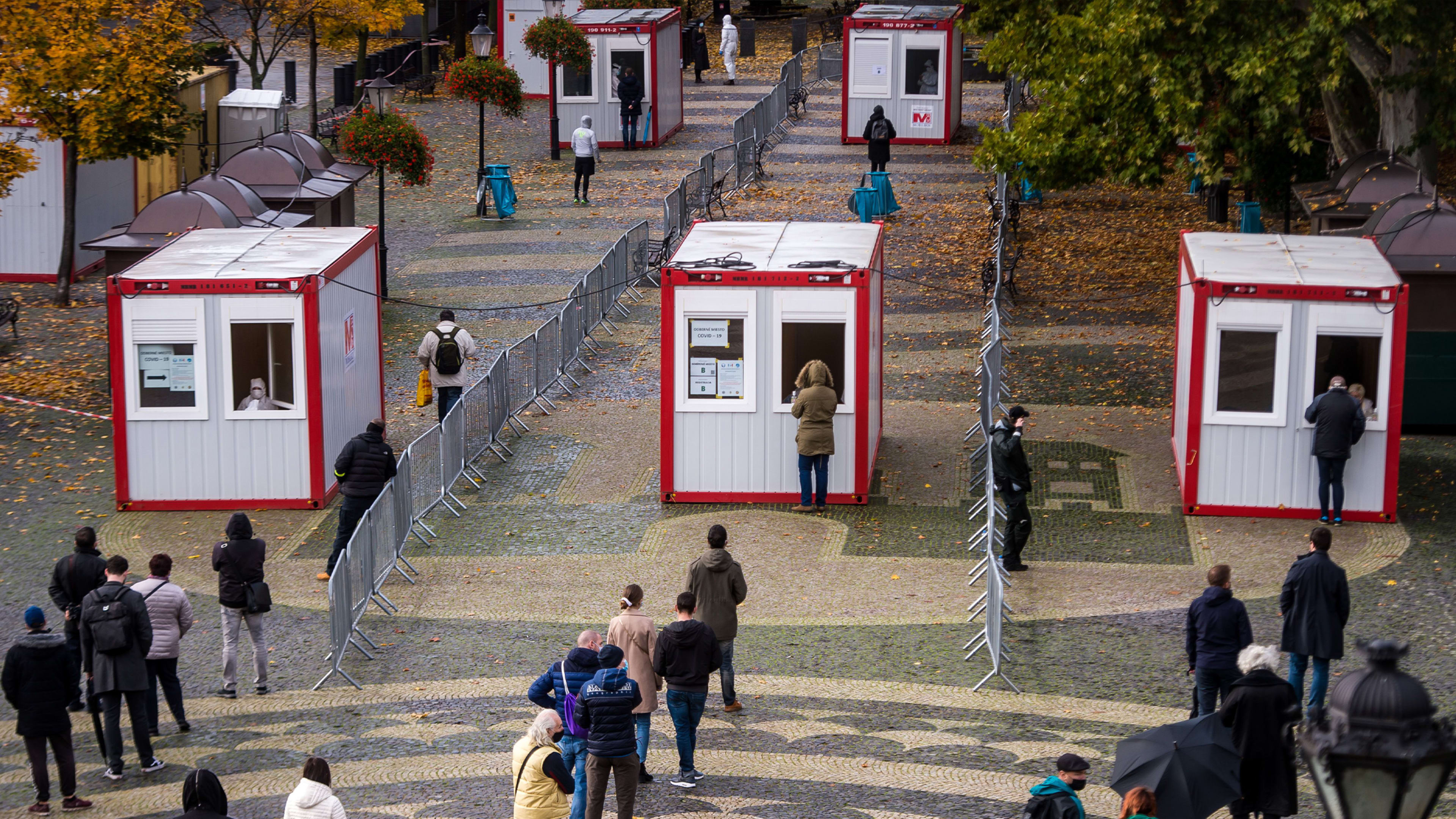For months, public health experts have argued that the U.S. should be running more COVID-19 tests—perhaps as many as 20 to 30 million tests each day, versus the roughly 1.6 million daily tests happening now—to help people learn their status so they can slow the spread of the virus before a vaccine is widely available. Now, as the virus is surging again, there’s new evidence about how much mass testing could help.
In Slovakia, where the virus had also been growing exponentially, the government started using rapid COVID-19 tests on a massive scale on October 31 and November 1, testing two-thirds of its population, with a mandatory quarantine for anyone who was infected. (Anyone who chose not to be tested was required to stay at home, with certificates given to those who took the tests.) It repeated the tests at the same scale a week later, and again this week. The benefits were almost immediate.
“Within a week—truly, within a week—they stopped the virus from exponentially growing on a country level, to dropping incidence by half,” Michael Mina, an epidemiology professor at the Harvard T.H. Chan School of Public Health, said on a press call on November 18. “Two weeks later, it dropped more. They’re doing . . . the third mass testing this week. I think it’s the best proof that we have, at the moment, anyway, that this can work.”
By the end of last week, the reproductive rate of the virus in the country was between 0.7 and 0.9, meaning that each person who is infected is infecting fewer than one person. Last weekend, Slovakia’s health minister wrote a Facebook post saying that the testing program “broke the curve” and “directed it quite steeply down.” He noted, though, that mass testing would have to continue or the rates would grow again. The country reopened theaters, churches, and other mass gathering spots on Monday, with reduced capacity.
Mina argues that if something similar had happened in the U.S., life could be completely different now. “These tests could have allowed Thanksgiving to happen normally, had we started this in August,” he says. “These tests . . . could still get us to have a much better Christmas. But we have to start today.” The government needs to step up with clear leadership and strategy, he says. “At the end of the day, we need to act like we’re in a war, and like we’re actually having something bad happen to America.”
Recognize your brand’s excellence by applying to this year’s Brands That Matter Awards before the early-rate deadline, May 3.
